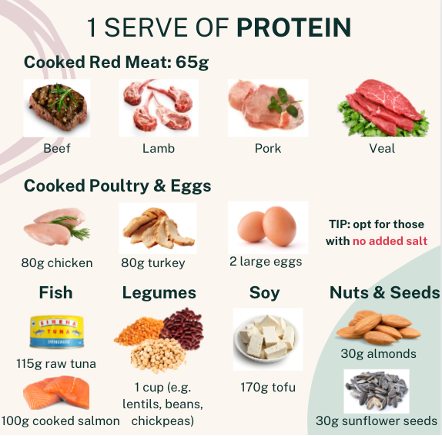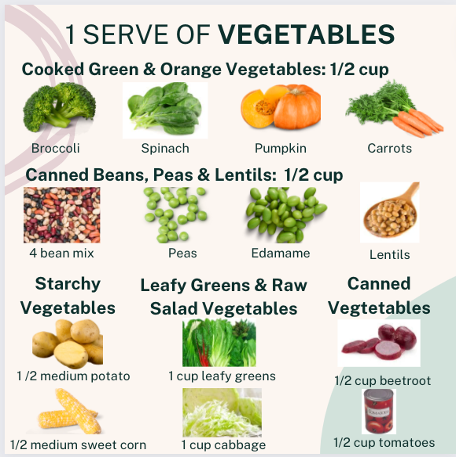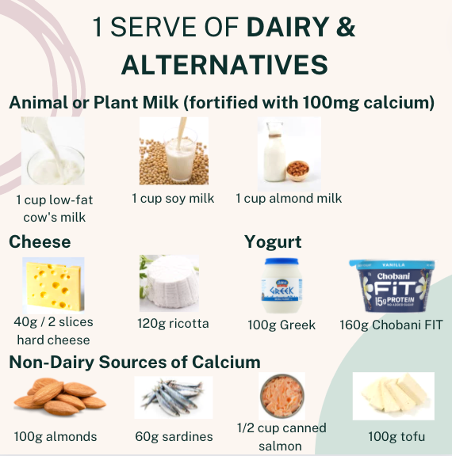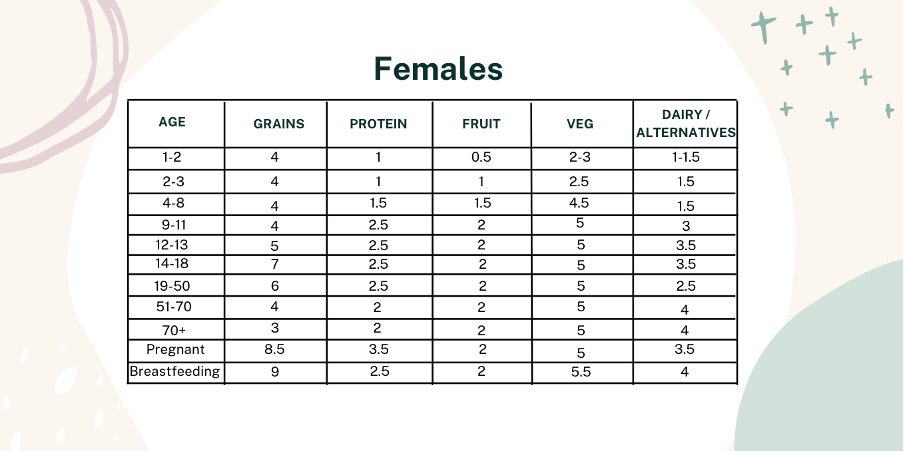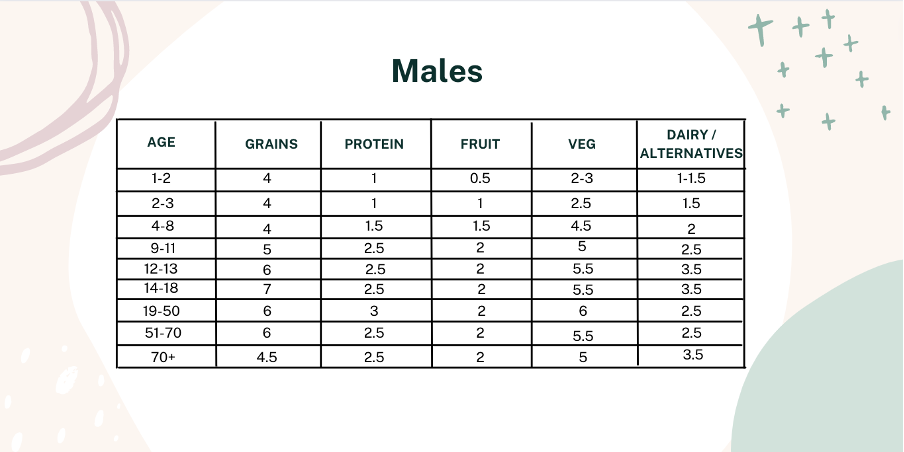A Guide to Serving Sizes
What is a Serving Size?
A serving size is the recommended amount of food to be consumed at one time.
It is important to remember that not all serves are created equally. Recommended serving sizes can differ based upon many factors, including:
Age
Gender
Energy expenditure: individuals who lead more active lifestyles, and therefore expend more energy, will require greater volumes of food.
Nutritional goals and requirements: including weight loss/gain, as well as food intolerances.
Whether an individual is pregnant or breastfeeding: during these stages, a woman will typically require a greater intake of grains, protein and dairy to support a healthy baby.
Health conditions: recommended servings can vary depending upon specific conditions including high blood pressure, anemia, diabetes, overweight and obesity.
What Does a Serving Size Look Like?
Let’s have a look at what a serving size may look like for each of the five food groups.
1. Grains
2. Protein
3. Fruit
4. Vegetables
5. Dairy and alternatives
How Many Serves Should I be Consuming Daily?
The following two tables demonstrate the recommended daily serves of each of the five food groups for both males and females. As previously mentioned, it is important to remember that these recommendations may also differ depending upon factors including energy expenditure, nutritional goals and requirements and health conditions.


